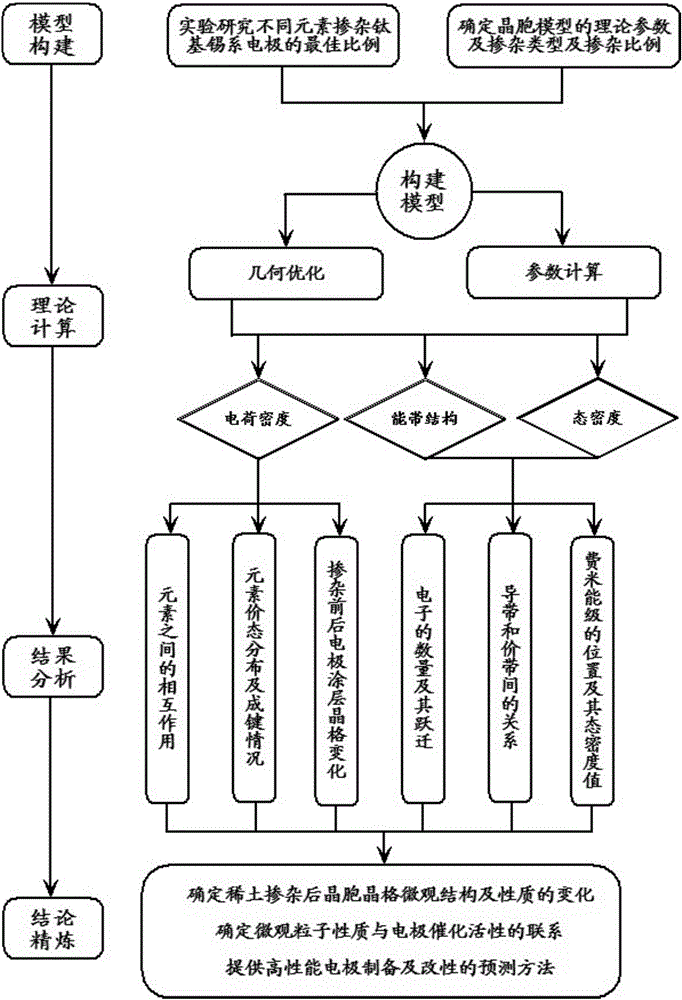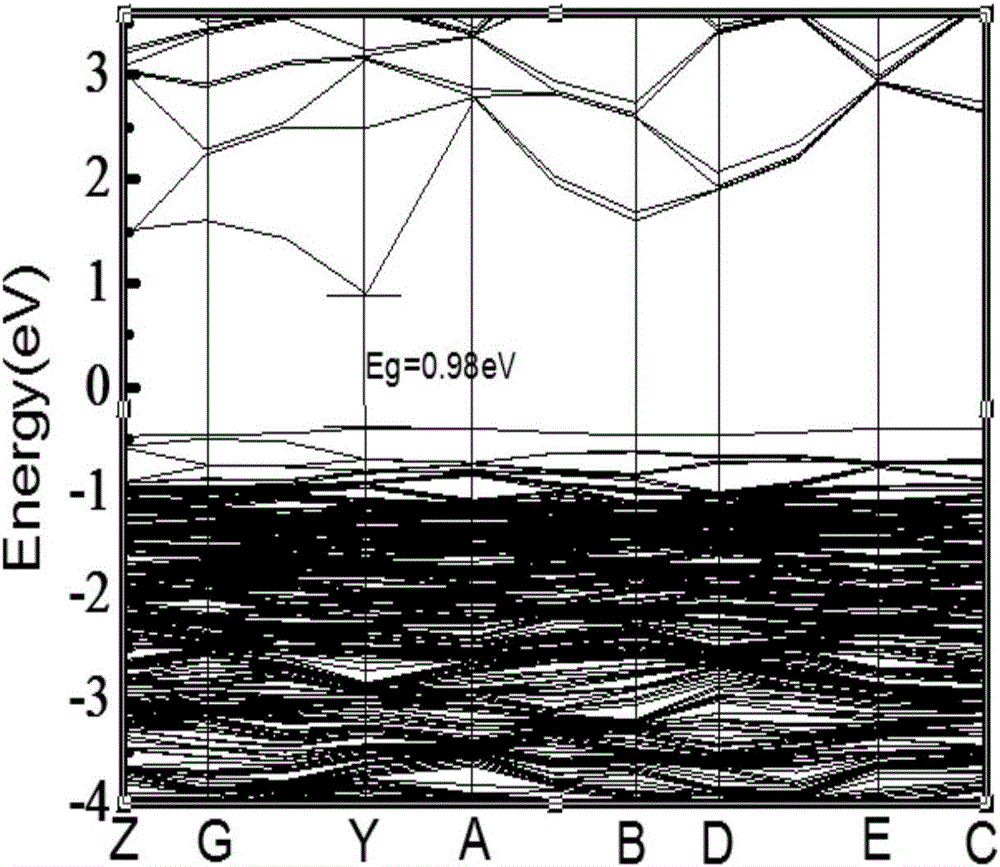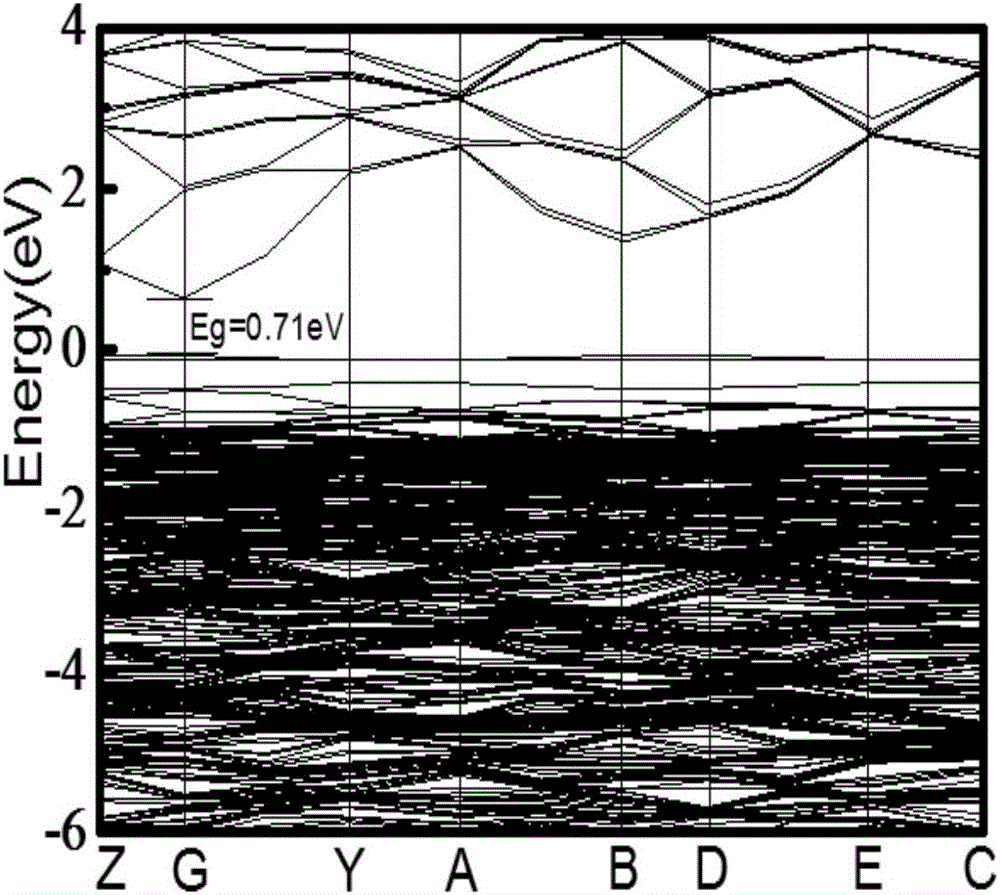Prediction method for performance of rare-earth-doped modified titanium-based stannic oxide electrode
A tin dioxide and rare earth doping technology, applied in electrical digital data processing, special data processing applications, instruments, etc., can solve the problems of complex wastewater composition, difficult treatment, and high concentration of organic matter
- Summary
- Abstract
- Description
- Claims
- Application Information
AI Technical Summary
Problems solved by technology
Method used
Image
Examples
Embodiment 1
[0034] Doping SnO with different concentrations of La 2 The system has been simulated, figure 2 , 3, 4, 5 are different concentrations of La-doped SnO 2 The band structure calculation results of the undoped SnO 2Compared with the band structures of the two, it is found that the bands are all degenerate. The bottom of the conduction band and the top of the valence band of the doped systems with La concentrations of 0.78%, 1.39%, 1.85%, and 6.25% are located at the same point in the Brillouin zone, indicating that the doped SnO 2 Still a direct bandgap semiconductor.
Embodiment 2
[0036] Depend on Figure 6 It can be seen that the bandgap width of the doped system (La concentration is 0.78%, 1.39%, 1.85%, 6.25%) is 0.98eV, 0.71eV, 1.06eV, 1.39eV respectively, and decreases first with the increase of doping concentration Afterwards, the increasing trend shows that the forbidden band width is the smallest at 1.39%, indicating that the transition from the valence band to the conduction band requires lower energy at this time. With the increase of the doping concentration, the top of the valence band crosses the Fermi level, indicating that The doped material will show a certain metal conductivity and also reflect the characteristics of acceptor doping. The increase in the acceptor concentration will increase the holes in the valence band, the degree of electron filling in the conduction band will decrease, and the Fermi level will drop to the top of the valence band, making The electrons in the valence band can easily jump to the conduction band, so that t...
Embodiment 3
[0039] In order to further analyze different concentrations of La-doped SnO 2 Conductivity and electrocatalytic performance of the system, the present invention calculates the total density of state (TDOS) and partial wave density of state of the doping system, such as Figure 8 , 9,10,11. with undoped SnO 2 Compared with the total density of states of the system, the dopant atom La appears in the conduction band and forbidden band, and in the conduction band region 0eV→6eV, with the increase of La doping concentration, electrons mainly provided by Sn5s and Sn5p are converted into The freely moving electrons are provided by Sn5s, Sn5p and La6s, and the number of electrons gradually increases, and they all move to the lower energy level, while the free moving electrons at the top of the valence band -5eV→0eV are mainly provided by Sn5p and O2p and transformed into Sn5s, 02s and Contributed by La 6s, the freely moving electrons all move to the top of the valence band. At the ...
PUM
 Login to View More
Login to View More Abstract
Description
Claims
Application Information
 Login to View More
Login to View More - R&D
- Intellectual Property
- Life Sciences
- Materials
- Tech Scout
- Unparalleled Data Quality
- Higher Quality Content
- 60% Fewer Hallucinations
Browse by: Latest US Patents, China's latest patents, Technical Efficacy Thesaurus, Application Domain, Technology Topic, Popular Technical Reports.
© 2025 PatSnap. All rights reserved.Legal|Privacy policy|Modern Slavery Act Transparency Statement|Sitemap|About US| Contact US: help@patsnap.com



